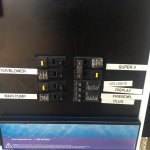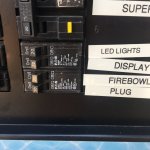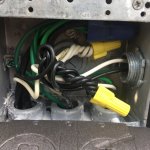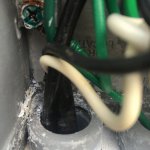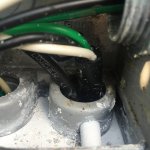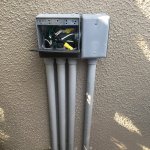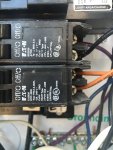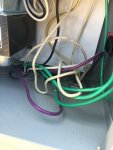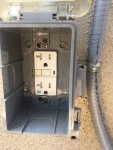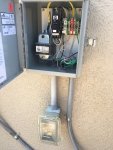Hello to all,
I'm starting a new thread that originated from the one below to determine water pump flow & if my spa light niche is leaking?
 www.troublefreepool.com
www.troublefreepool.com
The first pic is my pool breaker panel and the second pic is the circuit breaker that feeds my LED lights. The bottom 2 right EATON breakers do not look to be GFCI rated to me. Am I missing something? Are these code?
The last series of pics are the junction boxes where the main panel feeds the LED lights, then the three runs to the LED Lights: 2 pool & 1 spa.
The first pic is where the feed from panel comes in, then connecting the 2 pool lights and feeding the spa light
The next 2 pics are close ups of one of the lines feeding a pool light and the other pool light. I get the 14ga blk, white & green, but what is the much larger Blk wire? Is that a pull wire for feeding the line through conduit? The larger Blk wires are even wired-nutted together.
The last pic is a general perspective pic of both LED light junction boxes.
My main concerns:, are the LED lights on GFCI Circuits and what is the larger Blk wire in the junction boxes?
Thank you very much,
tstex
I'm starting a new thread that originated from the one below to determine water pump flow & if my spa light niche is leaking?
How to get my VSP to pull water from Spa to Pool ?
Hello to all, [Correction: Title should read: "How to 'get' VSP to pull water from Spa to Pool" Allen has been helping me w troubleshooting a leak in my spa. A PB stated that most leaks are from the light niche, but I am not 100% it is the light niche. So, I might have to see if one of the...
The first pic is my pool breaker panel and the second pic is the circuit breaker that feeds my LED lights. The bottom 2 right EATON breakers do not look to be GFCI rated to me. Am I missing something? Are these code?
The last series of pics are the junction boxes where the main panel feeds the LED lights, then the three runs to the LED Lights: 2 pool & 1 spa.
The first pic is where the feed from panel comes in, then connecting the 2 pool lights and feeding the spa light
The next 2 pics are close ups of one of the lines feeding a pool light and the other pool light. I get the 14ga blk, white & green, but what is the much larger Blk wire? Is that a pull wire for feeding the line through conduit? The larger Blk wires are even wired-nutted together.
The last pic is a general perspective pic of both LED light junction boxes.
My main concerns:, are the LED lights on GFCI Circuits and what is the larger Blk wire in the junction boxes?
Thank you very much,
tstex
Attachments
Last edited:


